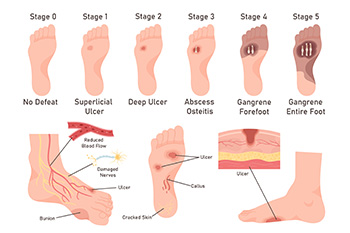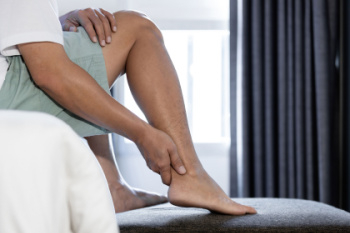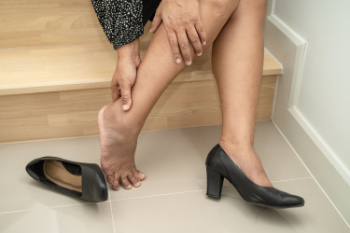
Gout, a type of arthritis, causes sudden, intense joint pain, often affecting the big toe initially. The affected joint becomes swollen, red, and tender to the touch during gout attacks. This condition arises from an accumulation of uric acid crystals in the joints, stemming from an overproduction or inefficient excretion of uric acid in the body. Dietary factors such as high-purine foods like red meat, seafood, and alcohol consumption can worsen gout attacks. Diagnosis typically involves a thorough medical history review, physical examination, and possibly joint fluid analysis to detect uric acid crystals. Blood tests measuring uric acid levels also aid in diagnosis. If you have had one or several gout attacks, it is suggested that you are under the care of a podiatrist who can offer you relief options and help you to manage this condition.
Gout is a painful condition that can be treated. If you are seeking treatment, contact Scott Samera, DPM from Samera / Foot + Ankle. Our doctor will treat your foot and ankle needs.
What Is Gout?
Gout is a form of arthritis that is characterized by sudden, severe attacks of pain, redness, and tenderness in the joints. The condition usually affects the joint at the base of the big toe. A gout attack can occur at any random time, such as the middle of the night while you are asleep.
Symptoms
- Intense Joint Pain - Usually around the large joint of your big toe, and it most severe within the first four to twelve hours
- Lingering Discomfort - Joint discomfort may last from a few days to a few weeks
- Inflammation and Redness -Affected joints may become swollen, tender, warm and red
- Limited Range of Motion - May experience a decrease in joint mobility
Risk Factors
- Genetics - If family members have gout, you’re more likely to have it
- Medications - Diuretic medications can raise uric acid levels
- Gender/Age - Gout is more common in men until the age of 60. It is believed that estrogen protects women until that point
- Diet - Eating red meat and shellfish increases your risk
- Alcohol - Having more than two alcoholic drinks per day increases your risk
- Obesity - Obese people are at a higher risk for gout
Prior to visiting your podiatrist to receive treatment for gout, there are a few things you should do beforehand. If you have gout you should write down your symptoms--including when they started and how often you experience them, important medical information you may have, and any questions you may have. Writing down these three things will help your podiatrist in assessing your specific situation so that he or she may provide the best route of treatment for you.
If you have any questions, please feel free to contact our office located in Lake City and Branford, FL . We offer the newest diagnostic and treatment technologies for all your foot care needs.









